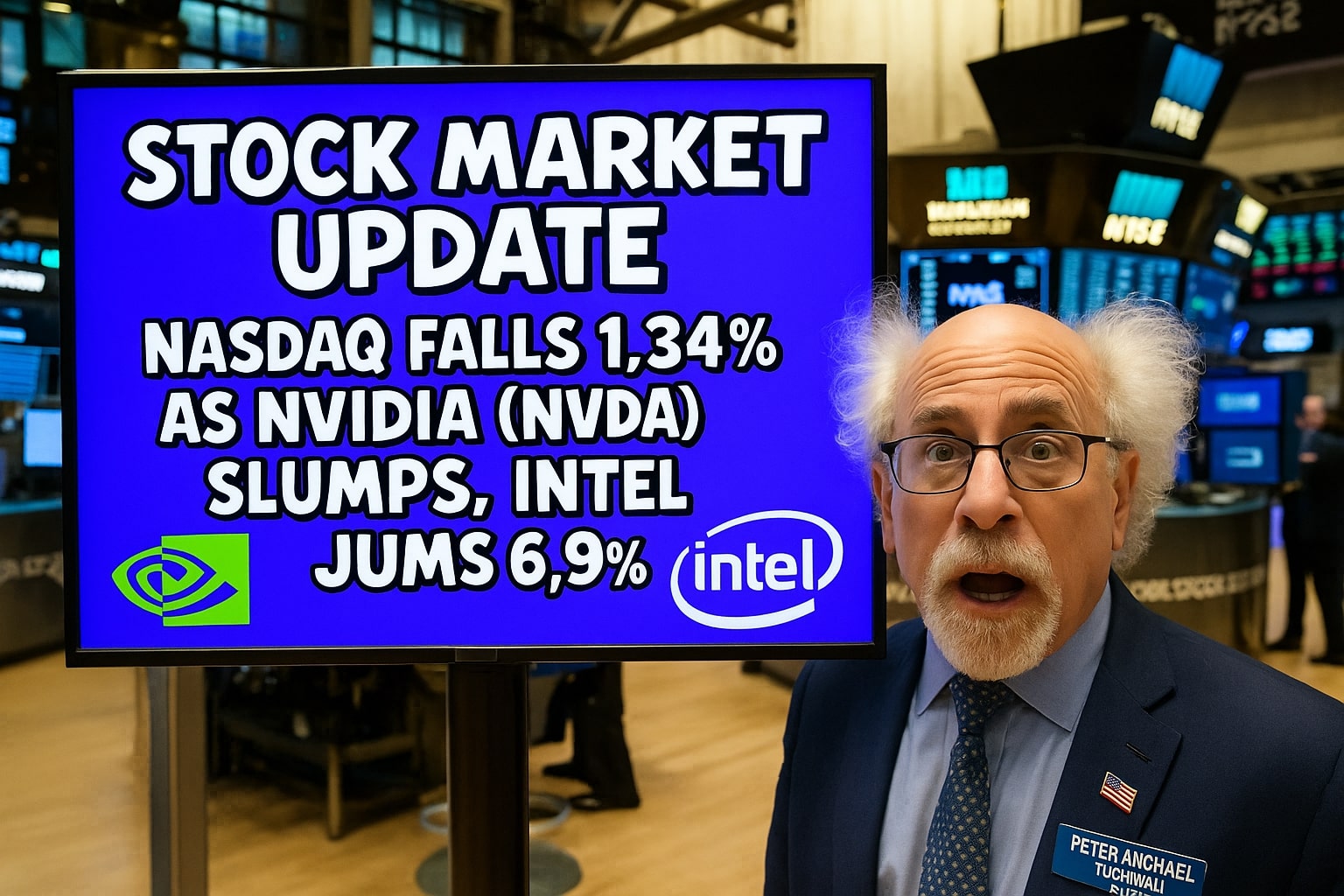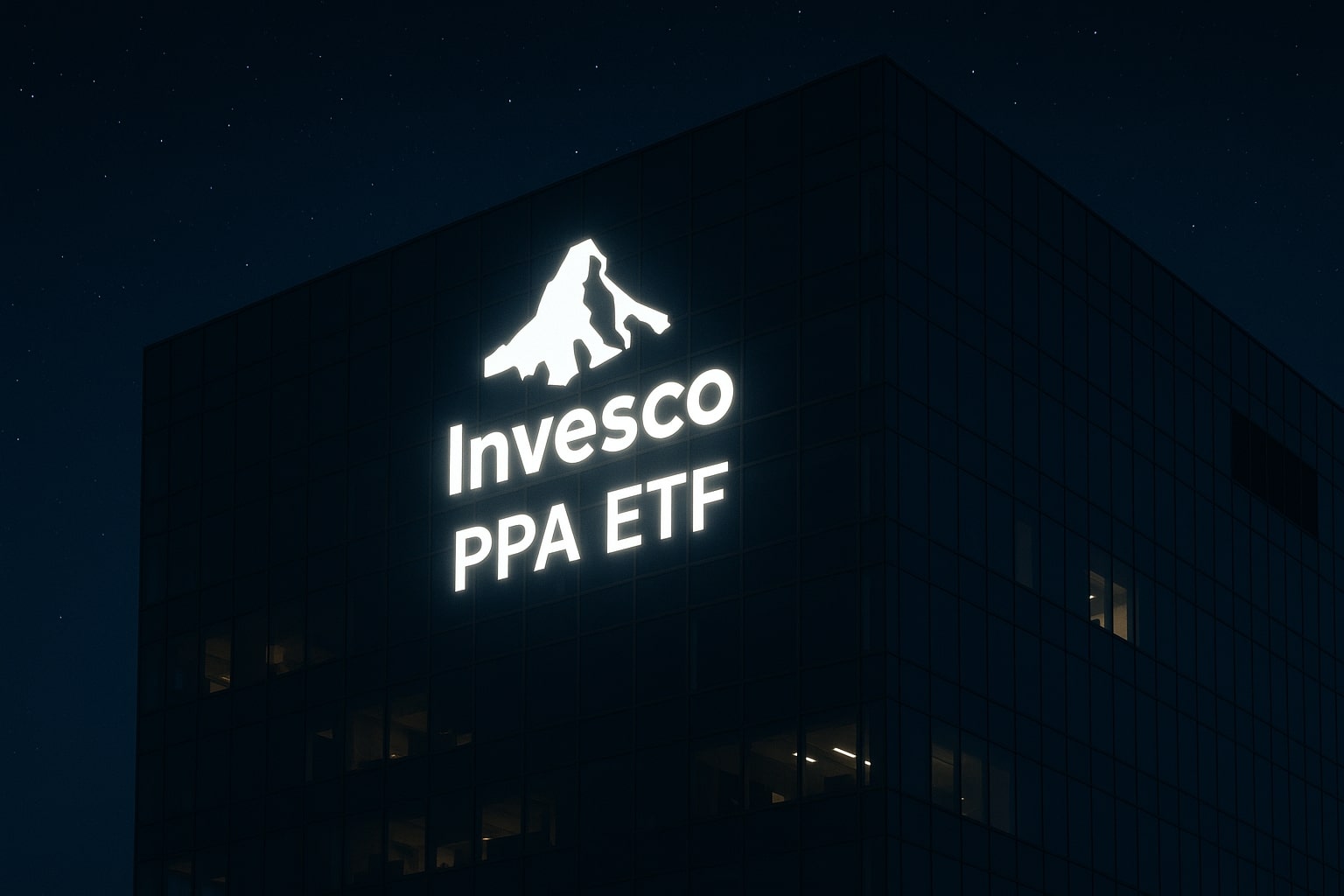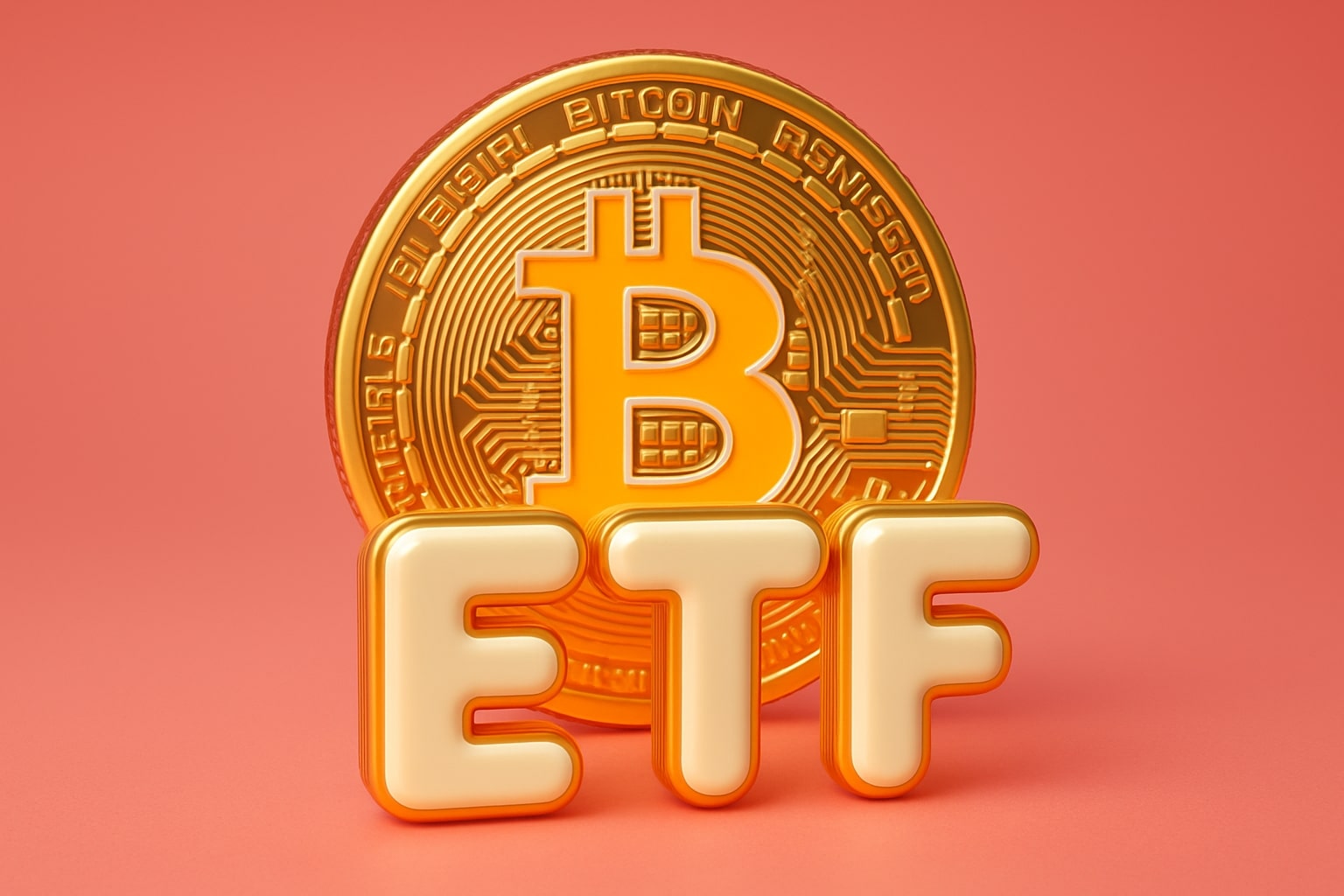
Stock Market Sees Nasdaq Down 1.34% as Big Tech Slides, Intel Soars on $2B Boost
Dow touches record 45,207 before reversing; S&P 500 pressured by tech losses as Powell’s Jackson Hole speech looms | That's TradingNEWS
Nasdaq Composite Under Heavy Pressure as Tech Weakens
The Nasdaq Composite (^IXIC) was the clear laggard on Tuesday, sliding 1.34% to 21,338.96 by midday as large-cap technology names faced a decisive pullback. Nvidia (NVDA) dropped nearly 3% to $176.62 after reports surfaced it is developing a new China-focused chip more powerful than the restricted H20 model, intensifying concerns over U.S.–China tech policy friction. Losses deepened across the semiconductor space: Advanced Micro Devices (AMD) fell 4%, Broadcom (AVGO) retreated 2%, and the VanEck Semiconductor ETF (SMH) slipped 1%. Elsewhere in tech, Tesla (TSLA), Meta Platforms (META), and Netflix (NFLX) all traded in the red, confirming the sector-wide rotation out of mega-cap growth.
Adding to the downside, Palantir (PLTR) plunged 7%, making it the weakest performer in the S&P 500 (^GSPC), as the stock’s sharp year-to-date rally unraveled further. Traders noted that momentum cracks in the AI trade could trigger multi-day corrections in names that have been market leaders since 2023.
Dow Jones Hits New Milestone Before Reversing
The Dow Jones Industrial Average (^DJI) briefly touched a fresh all-time high at 45,207.39 before reversing into negative territory, last seen at 44,887.43, down 0.05%. Home Depot (HD) was the standout driver, surging more than 3% to $406.78 after reaffirming its full-year outlook despite missing Wall Street’s Q2 estimates for both revenue and profit. The retailer projects full-year sales growth of 2.8% with same-store sales rising 1%. The reaffirmation was critical given two consecutive quarterly profit misses — the first such streak since 2008.
Market participants now await reports from Lowe’s (LOW), Target (TGT), and Walmart (WMT) this week, which will serve as a barometer for U.S. consumer resilience amid Trump’s tariff regime and sticky inflation.
S&P 500 Shows Sector Rotation Beneath the Surface
The S&P 500 (^GSPC) traded lower by 0.59% at 6,409.98, weighed down by technology but showing breadth elsewhere. Nearly 400 constituents advanced, with leadership coming from Real Estate (XLRE), Consumer Staples (XLP), and Health Care (XLV). This rotation, analysts argue, is a healthier path for the benchmark over the long run, even if the index’s short-term trajectory appears muted without Big Tech leadership.
Earnings season has provided a buffer: with over 92% of S&P 500 companies reported, aggregate EPS growth for Q2 stands at 11%, far surpassing consensus expectations of 5%. Goldman Sachs noted this was one of the strongest quarters of earnings beats on record, supported by tariff pass-throughs and dollar weakness.
Intel Surges on Strategic Investment and Government Backdrop
Intel (INTC) staged a sharp recovery, soaring 6.97% to $25.31 after SoftBank (9984.T) announced a $2 billion investment at $23 per share. This comes amid White House discussions about taking up to a 10% equity stake in the chipmaker to bolster U.S. semiconductor capacity. The capital injection lifts SoftBank into Intel’s top five shareholders.
Intel’s turnaround remains fragile — shares fell 60% in 2024 before rebounding 18% in 2025, still lagging behind the SMH ETF, which is up 23% year-to-date. CEO Lip-Bu Tan continues to scale back earlier CapEx-heavy plans, delaying the $20 billion Ohio fab project while searching for strategic alliances. Analysts remain divided: while SoftBank’s endorsement is positive, AMD’s persistent share gains remain a looming risk.
Retail Earnings in Focus as Consumer Spending Faces Tariff Pressures
Beyond Home Depot’s results, the retail calendar is stacked. Target (TGT) is due Wednesday, with Walmart (WMT) following Thursday. Analysts expect these earnings to highlight tariff-driven price adjustments and their impact on consumer behavior. Early indicators show mixed resilience: Amazon flagged stable demand earlier this quarter, but fast-casual dining chains reported customer pullbacks.
Housing-related spending could be turning a corner, with U.S. housing starts in July jumping 5.2% to 1.428 million units, the strongest annualized pace since late 2023. Permits, however, declined 2.8% to 1.354 million, underscoring continued caution in long-term construction commitments.
Pharma and Biotech Diverge Sharply
Healthcare delivered one of the day’s biggest shocks. Viking Therapeutics (VKTX) crashed 43% to $23.99 after mid-stage trial results of its obesity pill disappointed investors with high dropout rates, reducing its appeal as a competitor to Eli Lilly (LLY) and Novo Nordisk (NVO). Viking’s market cap collapsed from above $4 billion to just $2.7 billion in a single session, reaffirming the sector dominance of Lilly and Novo.
Meanwhile, Medtronic (MDT) slid 3.66% to $89.41 despite beating Q1 earnings estimates and adding two independent directors following Elliott Management’s activist stake. The governance shake-up and new committee formations signal heightened pressure to unlock shareholder value.
Broadcasters and Media Consolidation Reignite M&A Optimism
Media headlines centered on Nexstar (NXST) agreeing to acquire Tegna (TGNA) for $6.2 billion, creating the largest U.S. local TV group with 265 full-power stations across 44 states. Nexstar shares advanced over 6% to $205.30, while Tegna gained 4% to $22. The transaction, expected to close in late 2026, projects $300 million in annual net synergies and a 40% boost to Nexstar’s free cash flow in the first post-closing year. Citi analysts lifted Nexstar’s target to $218, citing $25 per share in incremental M&A value.
Crypto-Exposed Equities React to Regulatory Tailwinds
Digital assets-linked equities saw sharp moves as analysts extended the crypto cycle outlook to 2027. Coinbase (COIN) slipped 4.87% to $305.10, while Robinhood (HOOD) tumbled 6.07% to $108.04. Circle (CRCL) also traded lower, down 5.36%. Bernstein lifted Coinbase’s price target to $510, citing dominance in perpetual futures and on-chain finance, while projecting Robinhood EPS to compound at 53% annually through 2027.
Adding to the mix, Tether appointed former White House crypto adviser Bo Hines as a U.S. strategist, underlining Trump’s push to make the U.S. the “crypto capital of the world.”
Macroeconomic and Fed Watch: Jackson Hole Ahead
The macro backdrop is setting the stage for Friday’s Jackson Hole Symposium, where Fed Chair Jerome Powell is expected to tee up a September rate cut. Fed funds futures are pricing in an 83% probability of a 25-basis-point reduction. With 10-year Treasury yields at 4.31% and the S&P credit rating reaffirmed at AA+ due to tariff revenues offsetting fiscal slippage, markets are poised for Powell’s signal.
Final Market Snapshot
-
Dow Jones Industrial Average (^DJI): 44,887.43 (-0.05%)
-
S&P 500 (^GSPC): 6,409.98 (-0.59%)
-
Nasdaq Composite (^IXIC): 21,338.96 (-1.34%)
-
Intel (INTC): $25.31 (+6.97%)
-
Home Depot (HD): $406.78 (+3.06%)
-
Nvidia (NVDA): $176.62 (-2.96%)
-
Viking Therapeutics (VKTX): $23.99 (-43.01%)
-
Palo Alto Networks (PANW): $182.58 (+3.64%)
-
Coinbase (COIN): $305.10 (-4.87%)
The balance of earnings, macro clarity at Jackson Hole, and sector rotation will determine whether U.S. equities sustain momentum or enter a broader correction.
That's TradingNEWS
Read More
-
PPA ETF at $154: Can This Defense ETF Keep Beating ITA and SPY?
14.12.2025 · TradingNEWS ArchiveStocks
-
XRP ETFs XRPI and XRPR Pull In $975M While XRP-USD Fights To Hold $2
14.12.2025 · TradingNEWS ArchiveCrypto
-
Natural Gas Price Forecast: NG=F Hits $4.11 As Warm Winter Outlook Puts $3.913 Support At Risk
14.12.2025 · TradingNEWS ArchiveCommodities
-
USD/JPY Price Forecast - Dollar to Yen Can BoJ’s 0.75% Shock Break The 155–158 Range?
14.12.2025 · TradingNEWS ArchiveForex


















